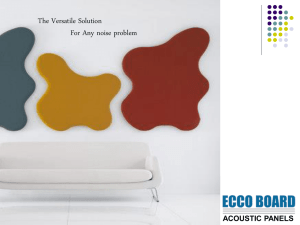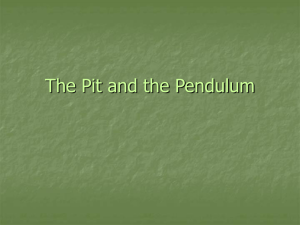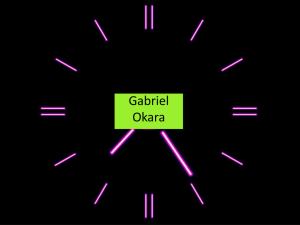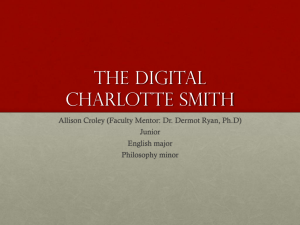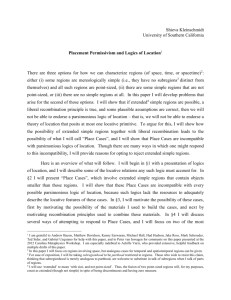Ecco un enigma: The structure of presentatives - IGG41
advertisement
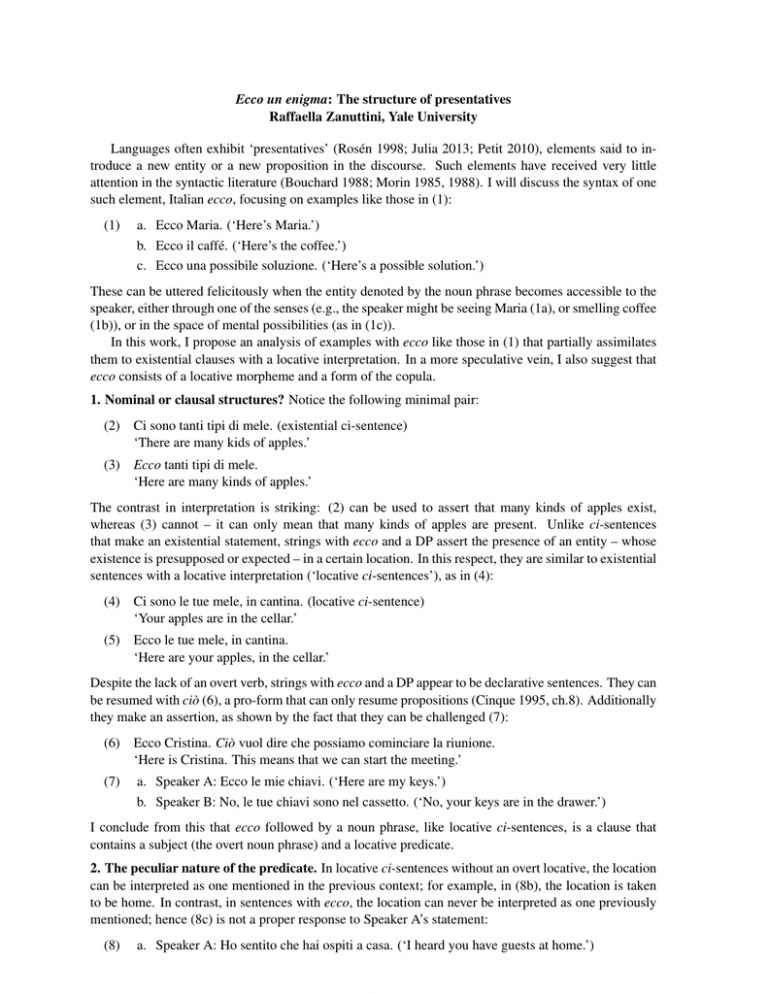
Ecco un enigma: The structure of presentatives Raffaella Zanuttini, Yale University Languages often exhibit ‘presentatives’ (Rosén 1998; Julia 2013; Petit 2010), elements said to introduce a new entity or a new proposition in the discourse. Such elements have received very little attention in the syntactic literature (Bouchard 1988; Morin 1985, 1988). I will discuss the syntax of one such element, Italian ecco, focusing on examples like those in (1): (1) a. Ecco Maria. (‘Here’s Maria.’) b. Ecco il caffé. (‘Here’s the coffee.’) c. Ecco una possibile soluzione. (‘Here’s a possible solution.’) These can be uttered felicitously when the entity denoted by the noun phrase becomes accessible to the speaker, either through one of the senses (e.g., the speaker might be seeing Maria (1a), or smelling coffee (1b)), or in the space of mental possibilities (as in (1c)). In this work, I propose an analysis of examples with ecco like those in (1) that partially assimilates them to existential clauses with a locative interpretation. In a more speculative vein, I also suggest that ecco consists of a locative morpheme and a form of the copula. 1. Nominal or clausal structures? Notice the following minimal pair: (2) Ci sono tanti tipi di mele. (existential ci-sentence) ‘There are many kids of apples.’ (3) Ecco tanti tipi di mele. ‘Here are many kinds of apples.’ The contrast in interpretation is striking: (2) can be used to assert that many kinds of apples exist, whereas (3) cannot – it can only mean that many kinds of apples are present. Unlike ci-sentences that make an existential statement, strings with ecco and a DP assert the presence of an entity – whose existence is presupposed or expected – in a certain location. In this respect, they are similar to existential sentences with a locative interpretation (‘locative ci-sentences’), as in (4): (4) Ci sono le tue mele, in cantina. (locative ci-sentence) ‘Your apples are in the cellar.’ (5) Ecco le tue mele, in cantina. ‘Here are your apples, in the cellar.’ Despite the lack of an overt verb, strings with ecco and a DP appear to be declarative sentences. They can be resumed with ciò (6), a pro-form that can only resume propositions (Cinque 1995, ch.8). Additionally they make an assertion, as shown by the fact that they can be challenged (7): (6) Ecco Cristina. Ciò vuol dire che possiamo cominciare la riunione. ‘Here is Cristina. This means that we can start the meeting.’ (7) a. Speaker A: Ecco le mie chiavi. (‘Here are my keys.’) b. Speaker B: No, le tue chiavi sono nel cassetto. (‘No, your keys are in the drawer.’) I conclude from this that ecco followed by a noun phrase, like locative ci-sentences, is a clause that contains a subject (the overt noun phrase) and a locative predicate. 2. The peculiar nature of the predicate. In locative ci-sentences without an overt locative, the location can be interpreted as one mentioned in the previous context; for example, in (8b), the location is taken to be home. In contrast, in sentences with ecco, the location can never be interpreted as one previously mentioned; hence (8c) is not a proper response to Speaker A’s statement: (8) a. Speaker A: Ho sentito che hai ospiti a casa. (‘I heard you have guests at home.’) b. Speaker B: Ci sono i miei genitori e mia sorella. (locative ci-sentence) there are the my parents and my sister c. Speaker B: #Ecco i miei genitori e mia sorella. (‘#Here are my parents and my sister.’) The only interpretation for (8c) is that the Speaker B’s parents and sister are where the speaker is at the time of utterance. Why is the locative predicate in ecco-sentences restricted to referring to the location of the speaker? I propose that it’s because it is dependent on a higher functional head, which determines its interpretation. I take this to be the head of the Speaker projection proposed in Giorgi (2010), which provides the spatial and temporal coordinates of the speaker. 3. Information structure. If this is on the right track, both locative ci-sentences and ecco sentences contain a subject and a locative predicate. Yet they constitute appropriate answers to different questions: (9) (10) a. Chi c’è (in cucina)? (‘Who’s there (in the kitchen))?’ b. C’è Maria. / *Ecco Maria. a. Dov’è Maria? (‘Where is Mary?’) b. Eccola! / *C’è (qui). Why? Cruschina (2012) argues that, in locative ci-sentences, the subject of the small clause raises to a Focus phrase lower than T (Belletti 2004; Moro 2009). I propose that, in sentences with ecco, it is the locative predicate (not the subject) that moves to a low FocusP, as illustrated in (13). This helps us account for the fact that ecco sentences are appropriate answers to where-questions. The locative predicate can optionally be realized as qui or lì, indicating proximity to or distance from the speaker, as seen in (11). Notice that the relative position of the locative and the subject supports the proposal that the locative is raised past the subject: (11) Ecco qui il gatto. / Ecco lì il gatto. (‘Here is the cat.’ / ‘There’s the cat.’) 4. Higher functional structure. Sentences with ecco can have clitic pronouns: (12) a. Eccole (qui). (‘Here they are.’) b. Eccone (qui) tre. (‘Here are three of them.’) I propose a structure like (13) – where, if the subject were a pronoun, it would raise and left-adjoin to T. I also speculate that the initial e- in ecco might be a (default) form of the copula and -cco might be a realization of the locative predicate (with qui and lì as optional modifiers): (13) SpeakerP Speaker e-cco TP T FocP -cco-qui Foc TopP Maria Top vP SC v DP XP Maria -cco-qui This way of looking at sentences with ecco sheds some light on their similarities with existential and locative sentences. It still leaves open the question of why they cannot be embedded or negated, and what gives rise to their ‘presentative meaning’.
